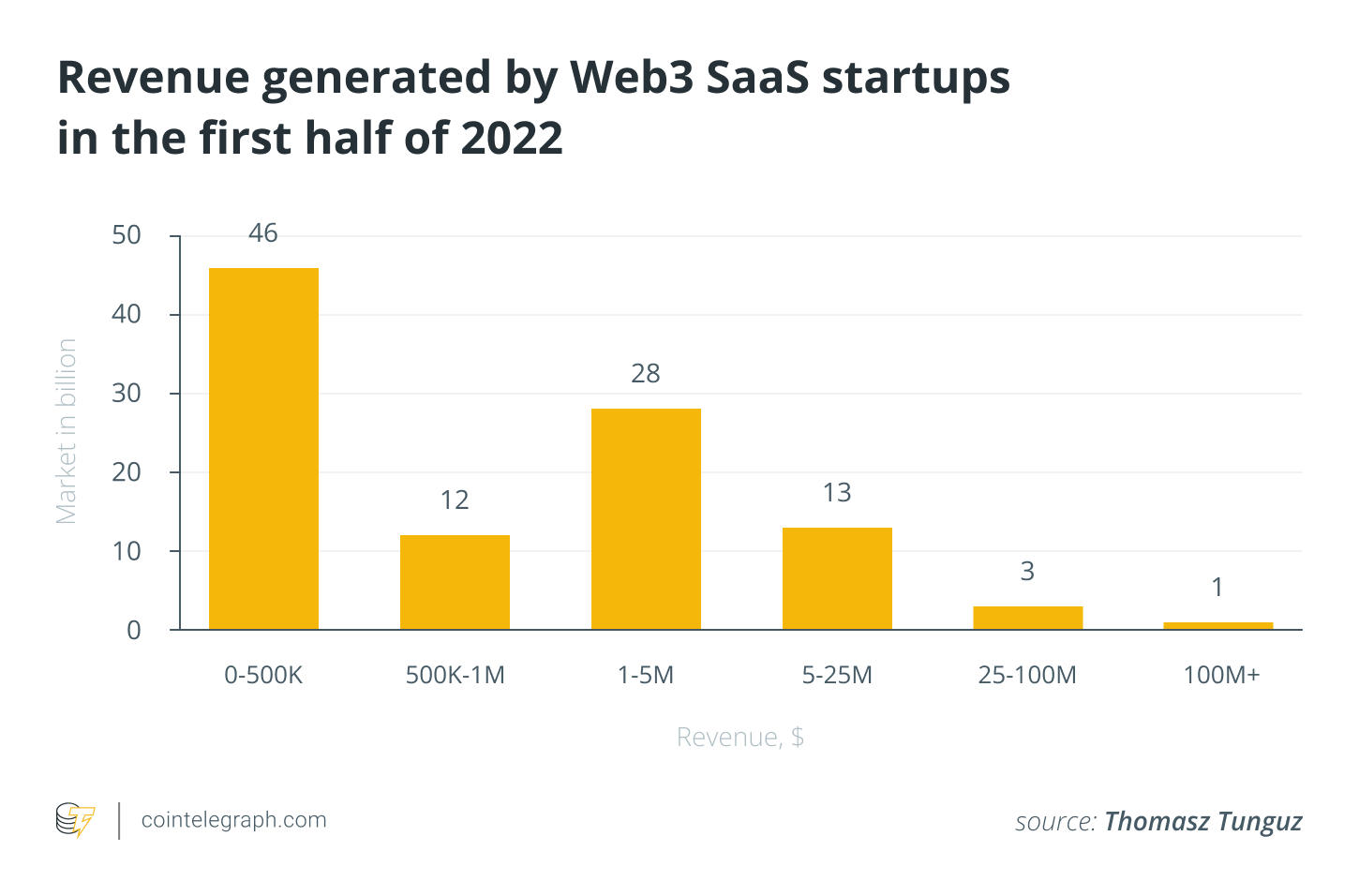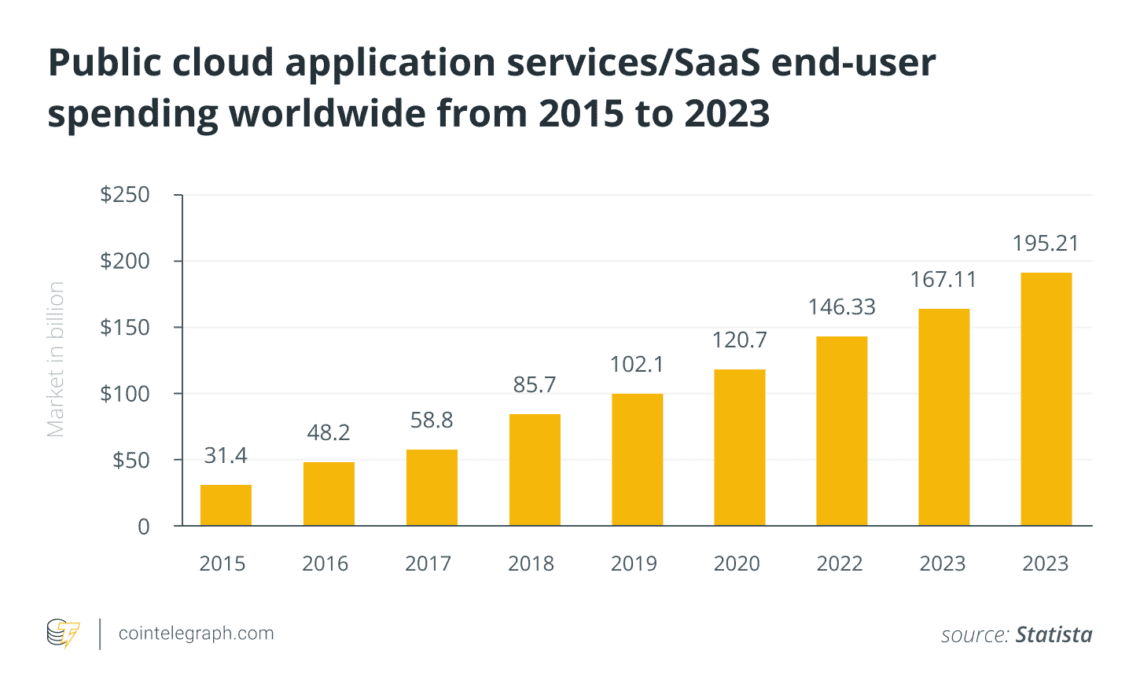In the era of services like Netflix, Dropbox or Amazon Prime, it’s quite easy to forget about the times when customers were getting in line to acquire boxed digital products, like software or entertainment media, with one-time purchases. The age of annual fees started when consumer products turned into subscription-based services.
The same transformation happened approximately a decade ago in the enterprise world when businesses reimagined ages-old solutions like enterprise resource planning or customer relationship management as ongoing services monetized via recurrent billings. Hence, the business-to-business (B2B) software-as-a-service (SaaS) model was born in the 2000s and disrupted the way enterprise technologies have worked over the last two decades.
B2B SaaS was left largely untouched by the thriving blockchain and crypto ecosystem until last year, but a long-running bear market made the Web3-first startups realize that they should leave no stone unturned in order to survive the harsh market conditions and tackle increasing competition.
From providing enterprise-level Ethereum infrastructures to blockchain-based document storage systems, Web3 SaaS (or SaaS3) companies offer decades-old business services reimagined in the Web3 environment, and fresh data shows that the business world is open to trying new ways of doing old things.

One attempt by venture capitalist Tomasz Tunguz to size up the total addressable B2B SaaS3 market calculated that 57 Web3 SaaS projects generated revenue ranging from $500,000 to above $100 million in the second half of 2022. The on-chain revenue of Web3 startups, largely dominated by Ethereum, indicates a total addressable market of $231 million in 2022.
The total addressable market, or TAM, is an admittedly optimistic chart that multiplies a project’s potential number of customers with the budget reserved for the service. It does not involve any competition or real-life limitations, hence the probability that the “addressable” part implies. TAM is the potential market opportunity for a product or a service, and the B2B SaaS3 space had south of one-quarter of a billion dollars of that opportunity last year.
Cashless society goals work in favor of Web3
Mark Smargon, CEO of blockchain-based payment platform Fuse, believes that B2B SaaS in the Web3 industry can benefit from quite a number of factors, including the increasing adoption of mobile devices, the internet and e-commerce platforms, as well as a shift…
Click Here to Read the Full Original Article at Cointelegraph.com News…
























